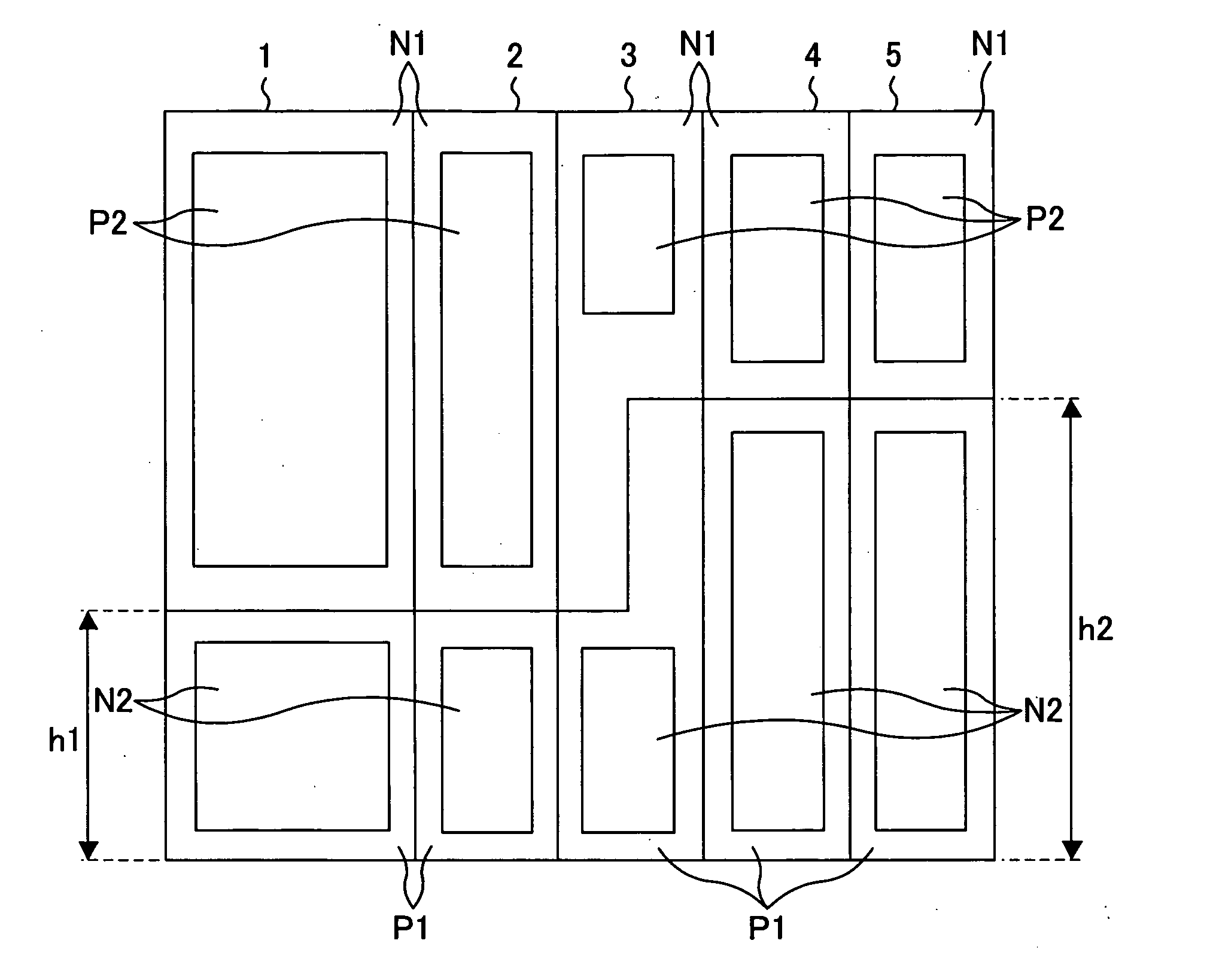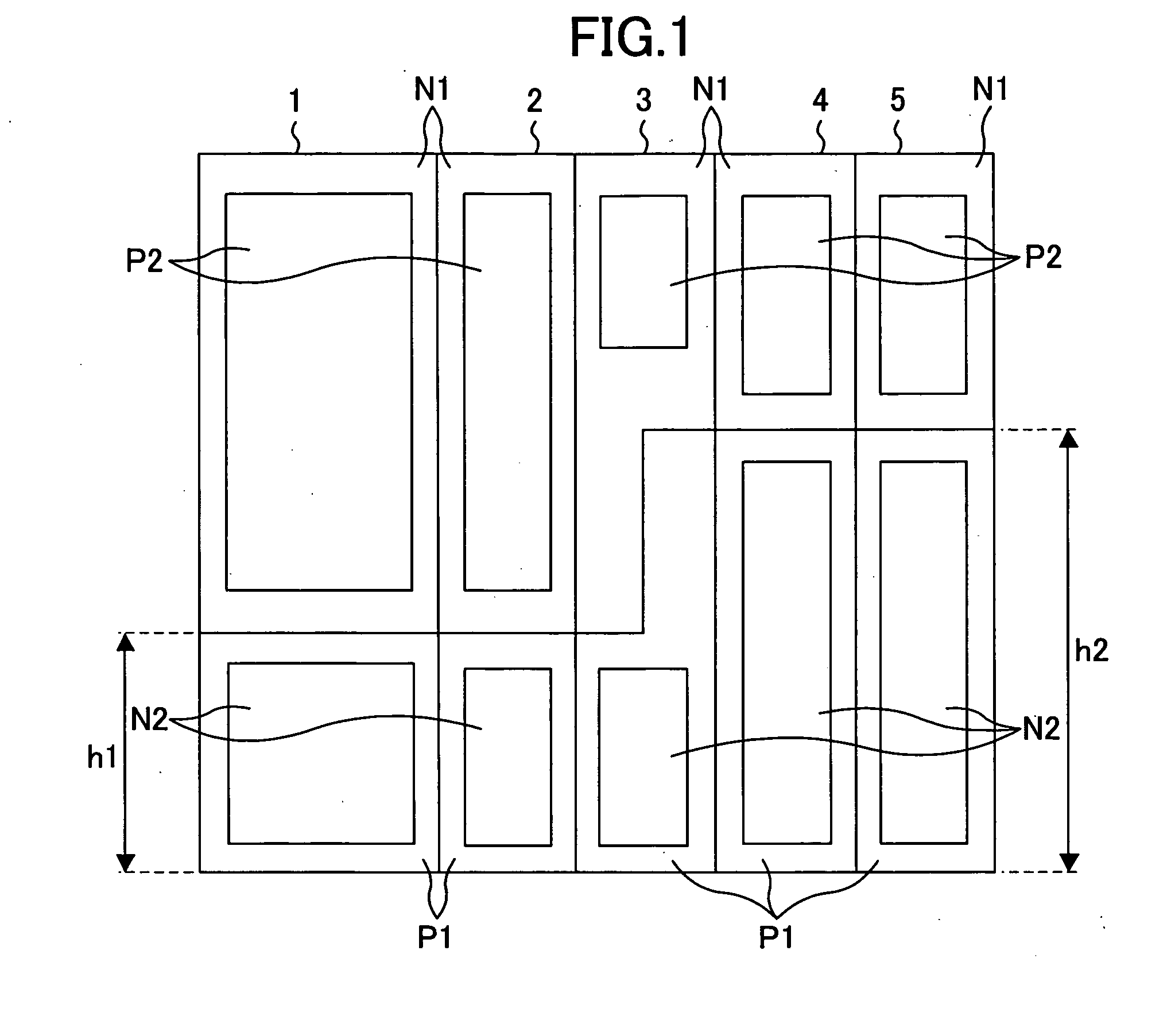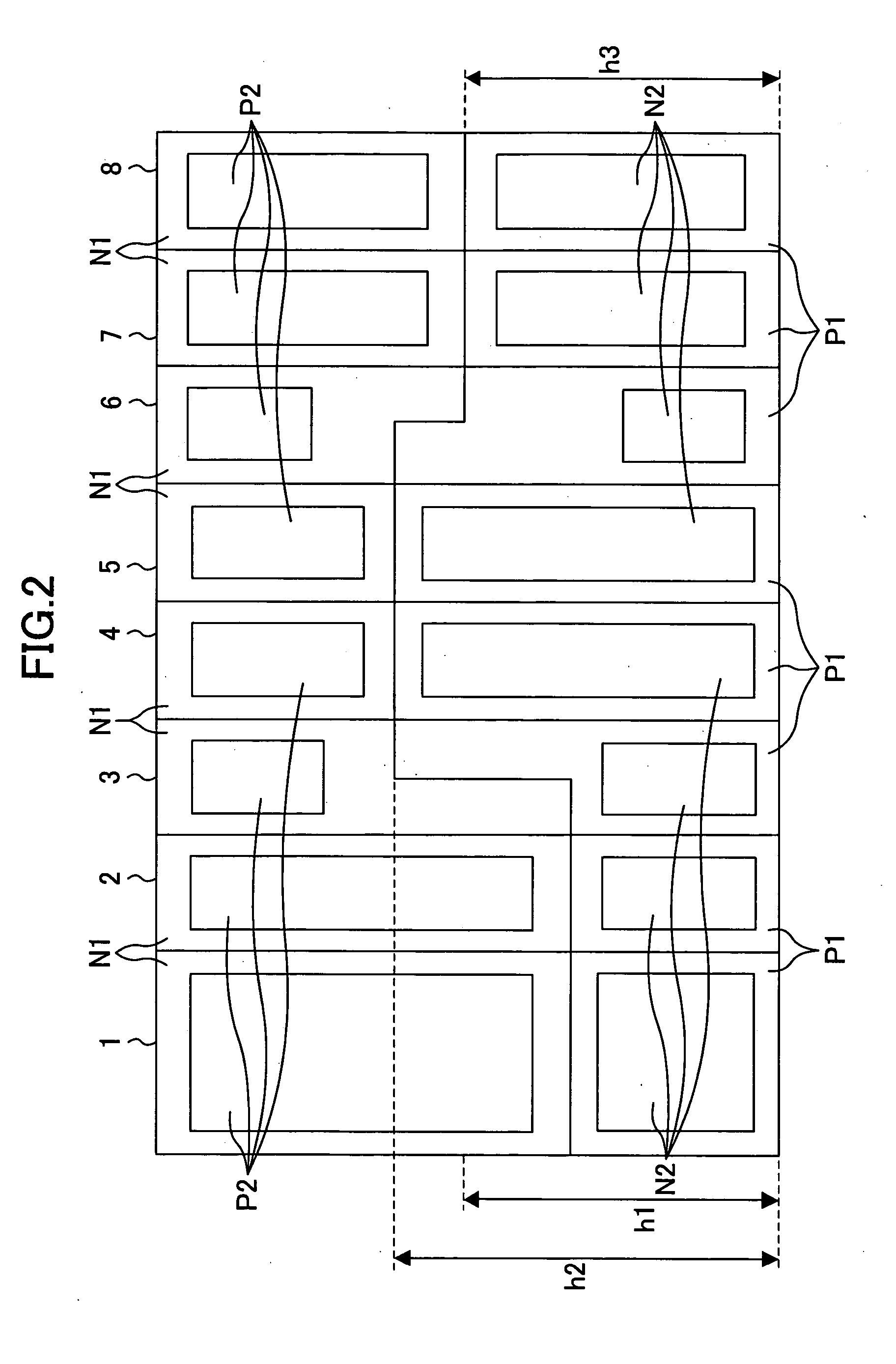Standard cell, standard cell library, semiconductor device, and placing method of the same
- Summary
- Abstract
- Description
- Claims
- Application Information
AI Technical Summary
Benefits of technology
Problems solved by technology
Method used
Image
Examples
first example
[0080]FIG. 1 is a standard cell placement diagram illustrating an exemplary layout of a standard cell semiconductor device according to a first example of the present invention. Note that standard cells indicated with the same reference numeral are identical to each other throughout the drawings in the first example or later.
[0081] In FIG. 1, 1 to 5 each indicate a standard cell. Each standard cell comprises an N-well region N1 (upper side) and a P-well region P1 (lower side). The N-well region N1 has a P-type diffusion region (P-type active region) P2 for forming a P-channel transistor, and the P-well region P1 has an N-type diffusion region (N-type active region) N2 for forming an N-channel transistor.
[0082] In the standard cells 1 to 5, a large-size transistor is realized by setting the height of the standard cell to be high without dividing into a plurality of standard cells using a parallel structure, thereby preventing a reduction in the area efficiency and a reduction in th...
second example
[0087]FIG. 2 is a standard cell placement diagram illustrating an exemplary layout of a standard cell semiconductor device according to a second example of the present invention.
[0088] Standard cells 1 and 2 are first standard cells in which a size of the P-channel transistor is larger than that of the N-channel transistor, a size of the P-type diffusion region P2 is larger than that of the N-type diffusion region N2, and the P-well region P1 has a height h1 (first height) at both ends thereof. Standard cells 4 and 5 are second standard cells in which a size of the N-channel transistor is larger than that of the P-channel transistor, a size of the N-type diffusion region N2 is larger than that of the P-type diffusion region P2, and the P-well region P1 has a height h2 (second height) which is different from h1, at both ends thereof. Standard cells 7 and 8 are fourth standard cells in which a size of the N-channel transistor is equal to that of the P-channel transistor, and the P-we...
third example
[0096]FIG. 3 is a flowchart illustrating a placing method for a semiconductor device according to a third example of the present invention. FIGS. 4 to 8 are diagrams illustrating a result of placement of standard cells based on the placing method of FIG. 3, and the standard cells. Hereinafter, the placing method of FIG. 3 will be described with reference to FIGS. 4 to 8.
[0097] In FIG. 3, S101 is a standard cell placing step of providing an initial placement in which standard cells having different well border line heights coexist.
[0098]FIG. 4 is a standard cell placement diagram illustrating a result of the placement in the standard cell placing step S101. Standard cells 104, 105, 108, 109, and 111 are each a standard cell (first standard cell) whose P-well region has a height h101 (first height). Standard cells 106, 107, and 110 are each a standard cell (second standard cell) whose P-well region has a height h102 (second height) which is different from the height h1.
[0099] At th...
PUM
 Login to View More
Login to View More Abstract
Description
Claims
Application Information
 Login to View More
Login to View More - R&D
- Intellectual Property
- Life Sciences
- Materials
- Tech Scout
- Unparalleled Data Quality
- Higher Quality Content
- 60% Fewer Hallucinations
Browse by: Latest US Patents, China's latest patents, Technical Efficacy Thesaurus, Application Domain, Technology Topic, Popular Technical Reports.
© 2025 PatSnap. All rights reserved.Legal|Privacy policy|Modern Slavery Act Transparency Statement|Sitemap|About US| Contact US: help@patsnap.com



